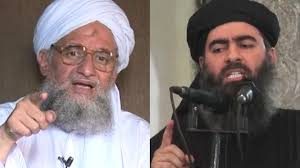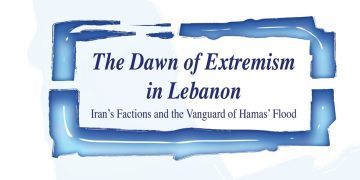by Sara Brzuszkiewicz
 After the crushing defeats that Da`ish has experienced in Iraq and Syria, some analysts started to believe this could be the end of the Islamic State, while others believe this is just a transition.
After the crushing defeats that Da`ish has experienced in Iraq and Syria, some analysts started to believe this could be the end of the Islamic State, while others believe this is just a transition.
Indeed, what is most likely to happen is a rise in the number of attacks abroad, fostered by the return of 5,600 foreign fighters to over 33 countries.
In July, Da`ish lost Mosul, the city where Abu Bakr al-Baghdadi proclaimed the Caliphate three years ago. In October, the Syrian Democratic Forces announced the liberation of Raqqa, the capital city of the Islamic State.
Undoubtedly, territorial control is part of the very identity of the group, and it is not by chance that it chose to name itself Islamic State of Iraq (ISI), Islamic State of Iraq and Syria/Sham (ISIS), and finally simply Islamic State (IS).
In these cases, wording acted as a mirror that reflected the territorial gains of the group, also expressed in the Caliphate’s mantra baqa’ wa tamaddud, “remaining and expanding”.
Nevertheless, there is no reason to think that the Islamic State will cease to exist.
On the contrary, what is more likely to happen is that it will survive through a constant, deep evolution, probably towards a greater resemblance to the older model of al-Qa`ida.
A sort of return to origins, and a re-qaidaization that would allow Da`ish to survive even without territory.
The relationship between the two rival organizations have been strikingly tense, especially since February 2014, when the current leader of al-Qa`ida Ayman al-Zawahiri officially disowned the younger group.
However, this does not mean that the Islamic State will not choose to readopt some traits that are typical of the AQ galaxy, such as the significance of the Far Enemy and the vision of the Caliphate as a long term project instead of an immediate priority.
If IS strategy changes, however, the risks will change as well, and it is increasingly imperative to take this into consideration, especially regarding the threat embodied by the returning foreign fighters.
In order to face the territorial loss, it is extremely probable that Da`ish will empower its global and external assets.
Indeed, what made the Islamic State unique among the jihadi groups was its glocal identity, which has been able to bring together the attacks in the West (global), with the action on the ground in Syria and Iraq (local).
The clandestine and secretive approach is likely to prevail again both in the Sham and in the West.
In this way, the Islamic State would eventually abandon some of the traits of an insurgent movement, to evolve in a classical terrorist group.
In this respect, it is not by chance that before being killed in August 2016, IS’s notorious spokesman Abu Muhammad al-Adnani repeatedly declared that the Islamic State would continue fighting even without territory.
Where territorial control and administration have been essential for building the myth of the Islamic State and increasing its international appeal, now the myth is largely self-sufficient, and the narrative is deeply codified.
Consequently, this narrative will not be dismissed, but rearranged on a renewed utopian level, which will build and rebuild the myth of the return to a glorious past of jihad, expansion, and strength.
From a strategic perspective, Da`ish actions might start to resemble those of al-Qa`ida, with attacks characterized by high symbolic value. However, it is unlikely that the group will have capacity and resources to plan and carry out major attacks of the kind of September 11.
A more convincing hypothesis is that the Islamic State will focus on the Far Enemy, but mainly relying on small cells with weak or no formal ties with the central leadership and low-costs attacks.
Indeed, many of the latest terrorist events, from Nice (July 14, 2016) to Barcelona and Cambrils (August 17, 2017), were logistically simple and did not require substantial personnel or long-term planning.
The shift towards a re-qaidaization of the Islamic State is clear from its new narrative, which is starting to focus on an undetermined future more than an imminent present.
Dealing with the loss of Mosul and Raqqa, for instance, the propaganda of the Caliphate makes extensive use of the concept of a “minor battle”, while after the “major battle” – a sort of momentous reckoning for the Enemy – the Islamic State will triumph.
In this scenario, the most immediate issue is embodied by the returning foreign fighters. According to a recent report by The Soufan Center (http://thesoufancenter.org/research/beyond-caliphate/), more than 5,600 individuals have left the Islamic State in the last few months.
Unfortunately, the data includes only 33 countries, whereas the number of countries from which Da’ish has drown recruits is substantially larger.
These flows are likely to cause or exacerbate multiple problems, ranging from the higher risk of attacks in different countries to the breaches in the national legislations that are supposed to prosecute those people.
Many of the members of the French-Belgian cell responsible for the Paris (November 13, 2015) and Brussels (March 22, 2016) attacks for instance, had been trained in the Middle East and later came back to Europe.
Every time a theatre of clashes consumed its appeal for different reasons, a considerable portion of the modern jihadi galaxy has always been able to move in new contexts and regions. After the anti-Soviet jihad in Afghanistan, countries like Egypt, Algeria, and the Balkans have been telling examples of this remarkable adaptability.
In conclusion, if the question is “Will the Islamic State survive with the same characteristics and priorities as we used to know it?” the answer is no.
On the contrary, it is extremely likely that it will survive undergoing significant strategic, tactical, and communicative changes, which will make it more similar to its original model: the al-Qa`ida franchise.
From its perspective, the group of Ayman al-Zawahiri will probably leverage the failures of the Islamic State to weaken the rivals’ image and to highlight that their objectives were unrealistic and pursued with rashness and precipitation.














